
Competitor Analysis Tools to Spy on Your Competition
Published Dec 20, 2023Contents
- Why competitor analysis tools are a must-have
- Which tools do people use for competitor analysis?
- Tools to analyze competitors on social media.
- AI-powered competitor analysis tools
- Competitor analysis tools for SEO
- Competitor analysis tools for content
- Tools to analyze competitors' emails, ads, and industries.
- How do you do a competitor analysis?
- What competitor analysis tools do you use?
Why competitor analysis tools are a must-have
The good news, though? Many competitor analysis tools exist. They help you quickly assess how you stack up against your top competitors. They are efficient.
With the right tools on deck, you can spend less effort trying to dig dirt on your competitors. You can spend more time actually marketing.
Why spend too much time spying on your competitors? Let smart tools do the legwork for you.
Which tools do people use for competitor analysis?
You can analyze your competitors in many ways and with various tools. Any tool that helps you monitor your brand and others can be used to spy on the competition.
A few different types of tools include:
Social media management tools
Competitive monitoring and social listening tools
Keyword tools
Analytics tools
AI tools
We have created a detailed list of competitor analysis tools to help you get started.
Competitor analysis tools for social media
AI-powered competitor analysis tools
Competitor analysis tools for SEO
Competitor analysis tools for content
Competitor analysis tools for email, ads and industries
Tools to analyze competitors on social media.
1. Sprout Social

The top channel for connecting with customers is social media. It is the best place to start competitive analysis.
Sprout Social helps you see how your competitors perform on social media. You can analyze it from different perspectives and data points.
Sprout's reports can help you check and improve your social strategy. The reports give you detailed data to track on Facebook, Twitter, and Instagram.
You can see what your competitors are posting. You can compare your growth to the profiles we are comparing to the average. It's just one click away. You don't have to do any tedious manual research or use messy spreadsheets.
Improve your analytics with Sprout’s Premium Analytics tool. It provides deeper insights into your social platforms. You can customize the interactive charts and graphs to align with your goals.
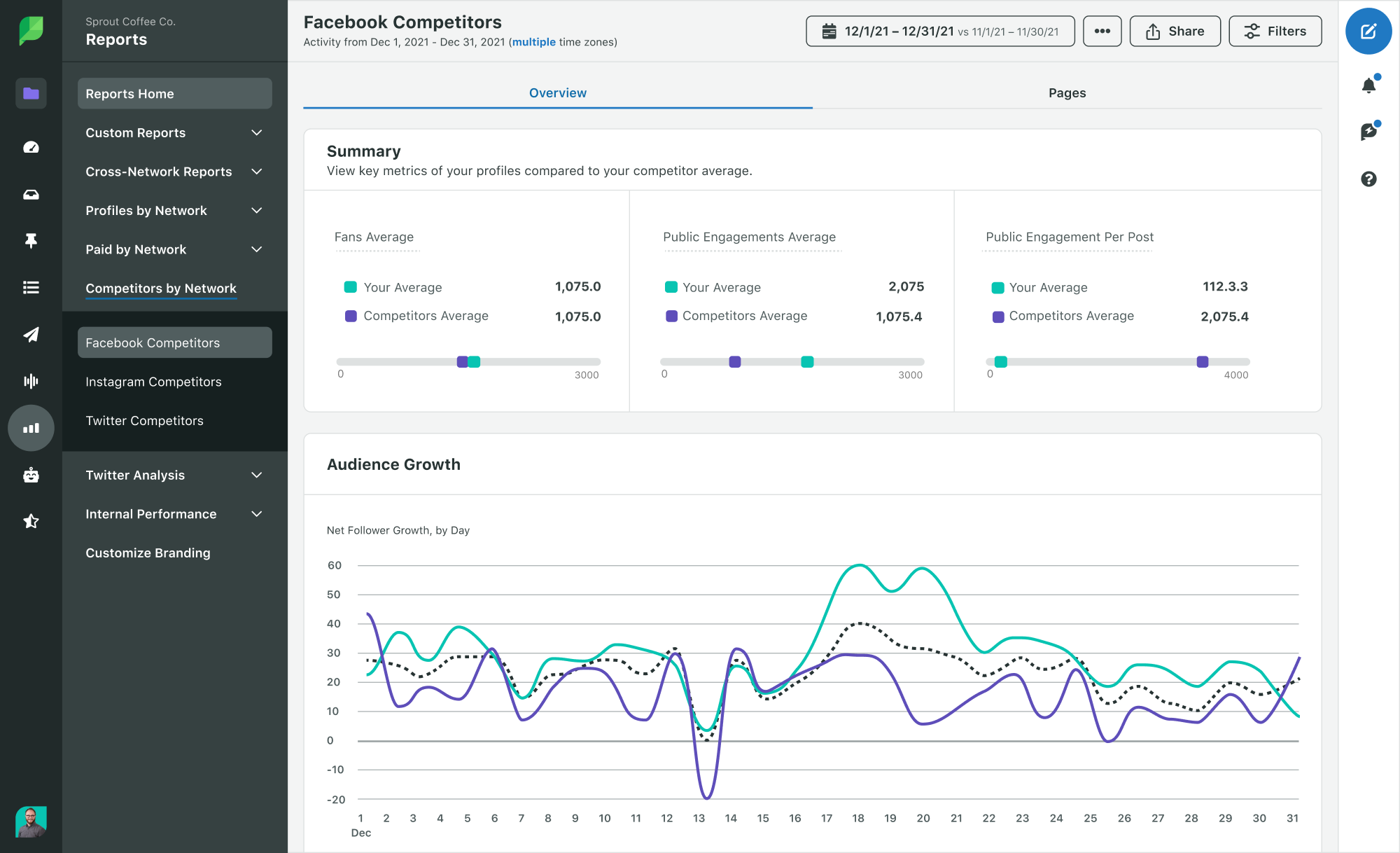
Sprout offers the same competitive analytics on Instagram too.
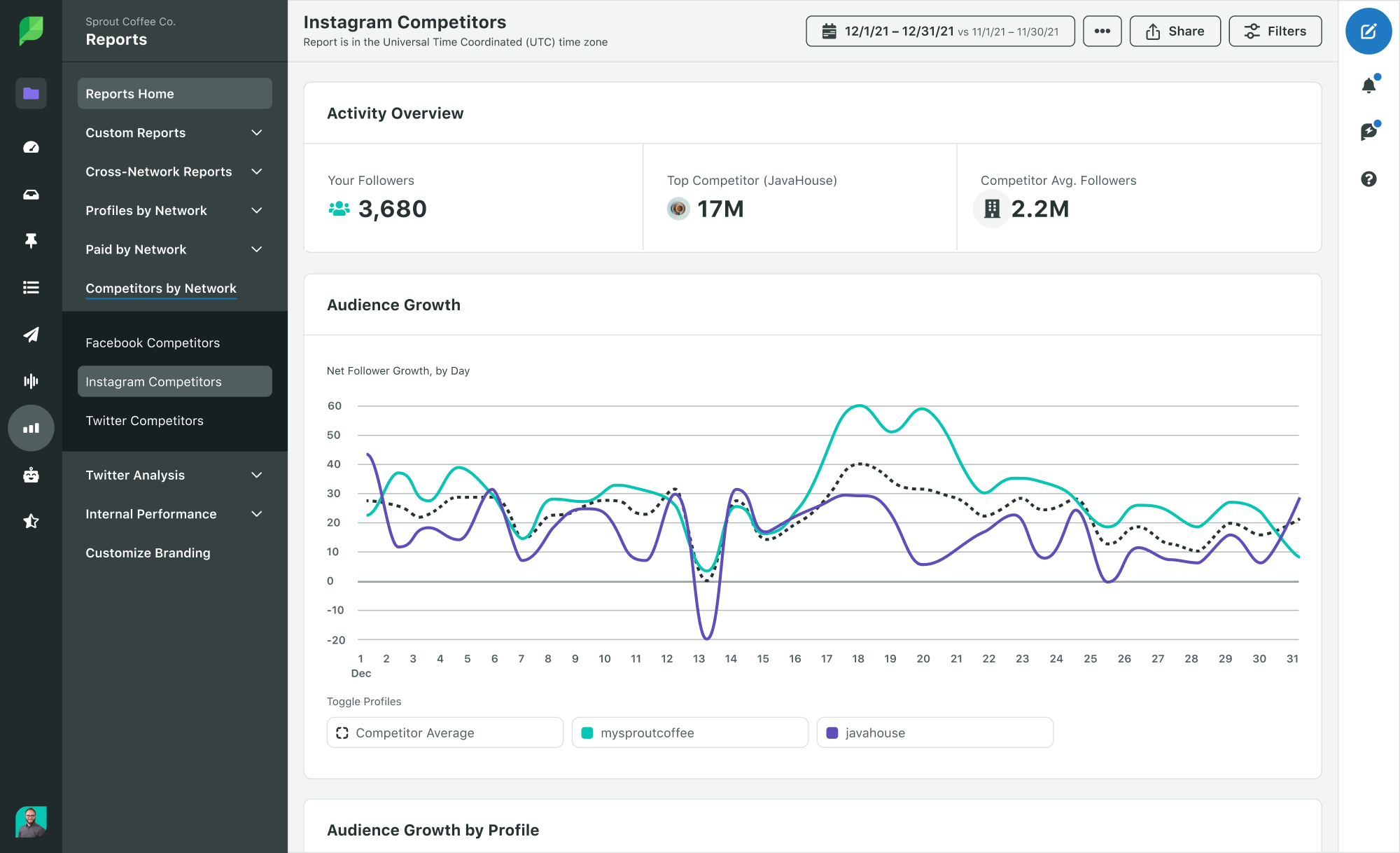
And you can dive even deeper using Sprout’s Advanced Listening tool.
You can find out how consumers feel about your competitors' products and services. You can do this by tapping into publicly available social conversations. You can also examine your own share of voice in your industry.
Sprout provides direct access to consumer sentiment. This makes it easy to identify opportunities to differentiate your brand from competitors.
2. Phlanx

The Instagram engagement calculator tells you how active a follower is on any account. It helps you analyze your competitor's Instagram presence. It also helps you figure out if an influencer has a real following.
Phlanx’s engagement ratio is based on the number of followers an account has. It compares with the rate that followers interact with content (likes, comments, etc).
Trader Joes has a 2.56% engagement rate. This is a decent score for a big brand that posts regularly.
Denny's has many social media followers and loyal fans.
This score isn’t the only measure of a brand's Instagram presence. However, it does offer valuable perspective.
Let's take Adidas as an example. They have a lot of followers, but their engagement on posts is not as high as you would expect.
This relates to a larger point about analyzing competition on social media. Context is important. It's easy to focus on the number of followers, but engagement is arguably a more important measure.
3. Social Blade

Social Blade is a helpful tool for checking popular brands. It displays follower counts on Twitter, Instagram, and YouTube, along with other services. Marketers can find valuable insights here. Many people use it to evaluate celebrities and YouTubers.
They analyze competitors on Twitter. Then, they assign a "grade" based on the average number of retweets and likes.
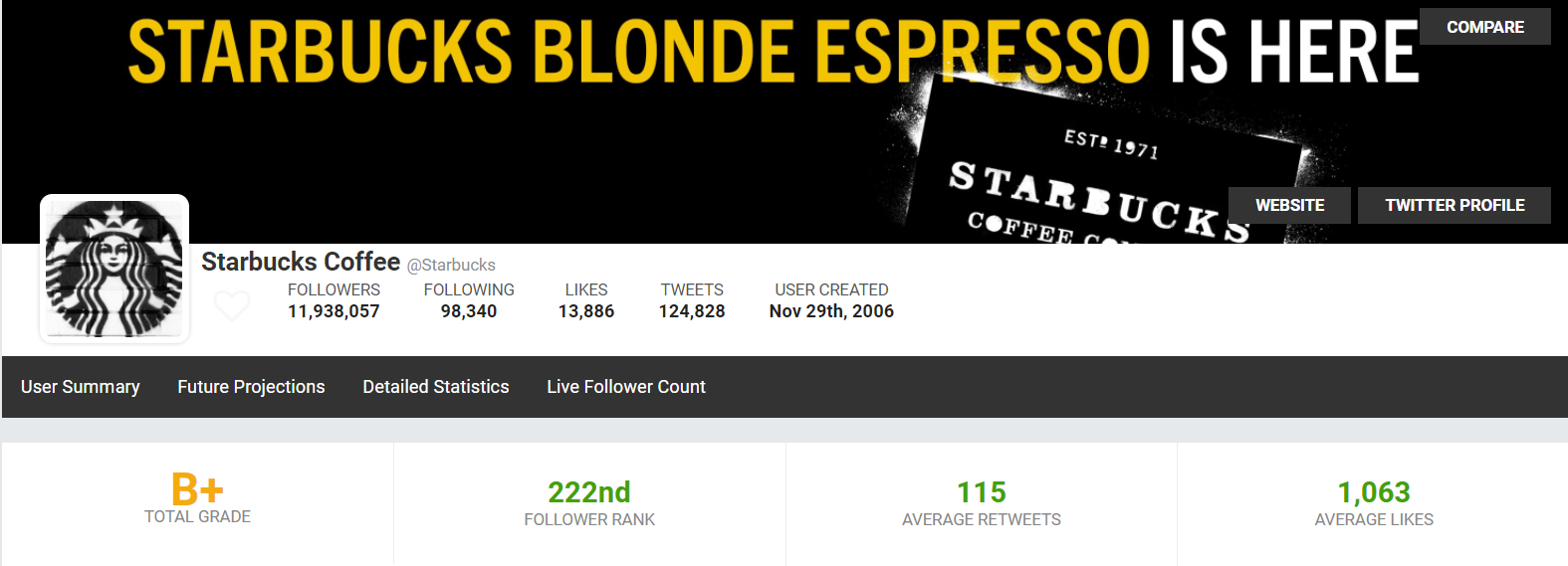
Social Blade provides a day-by-day follower update. It also shows a live follower count.
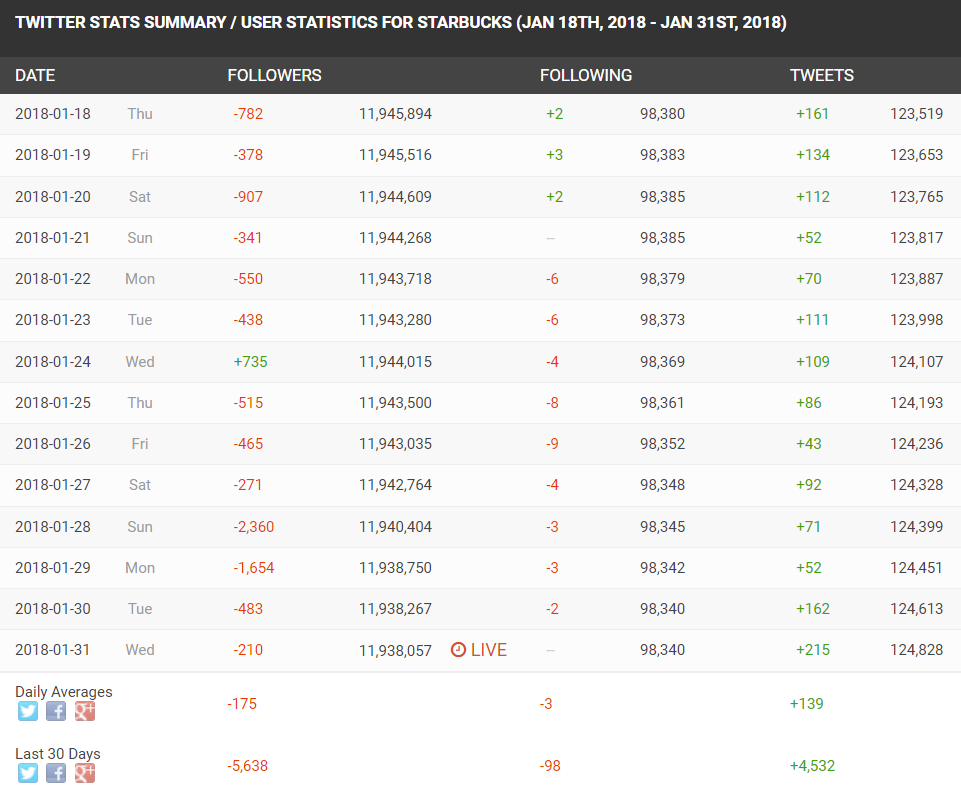
Another cool feature is the ability to compare brands’ social presences.
AI-powered competitor analysis tools
4. Kompyte

Kompyte is a tool for competitive intelligence. It pulls competitor updates into a dashboard. The dashboard is easy to monitor. The updates come from different sources. These include the competitor's website, review sites, and social media. Also, ads, job openings, and more. These include the competitor's website, review sites, and social media. Also, ads, job openings, and more.
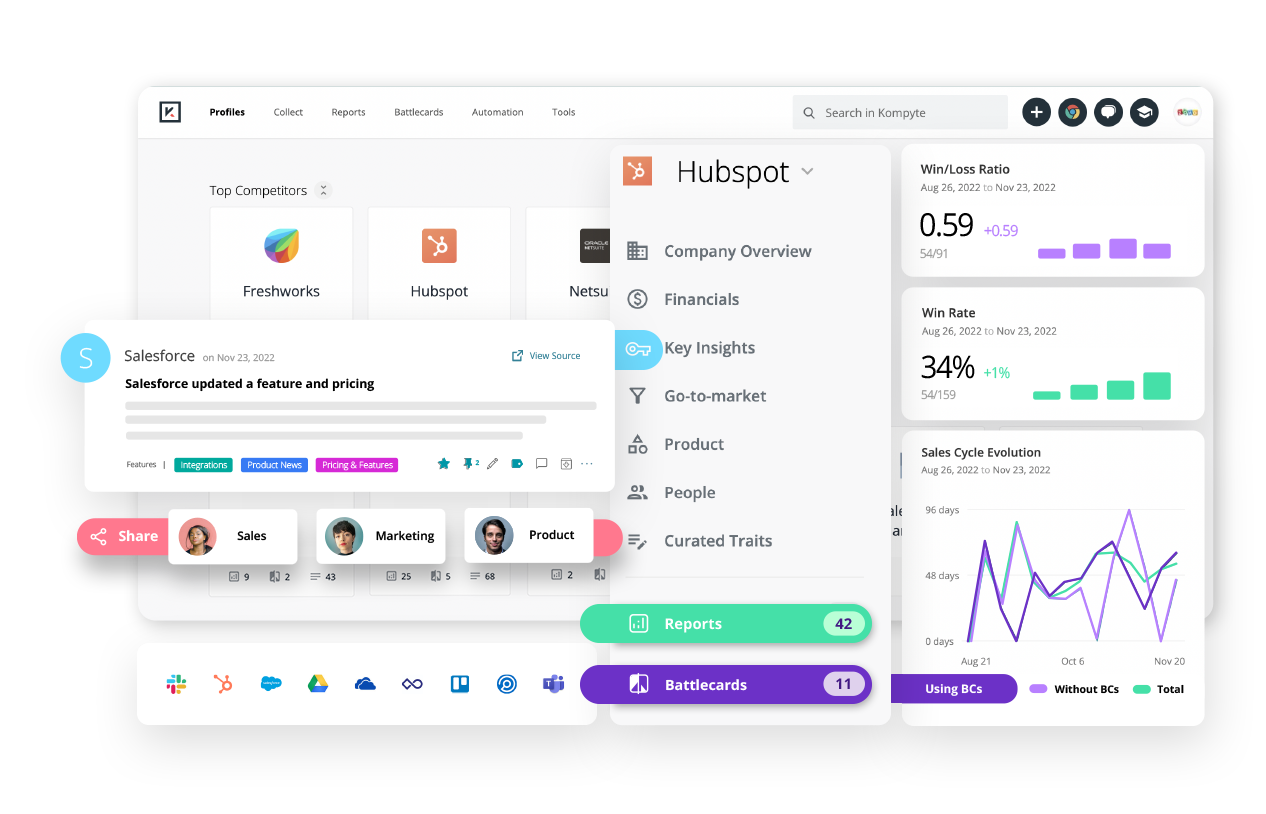
Easily monitor competitor updates. Keep a clear eye on what other brands in your industry are doing online. Plus, Kompyte helps put together sales battlecards based on your competitive findings. Your team can use them to close sales.
5. Crayon

is a tool that uses artificial intelligence. It helps with competitor analysis and competitive intelligence. Users can use Crayon to create a dashboard of competitor updates. The updates are automatically compiled and organized. This way, brands can always know what their competitors are doing.
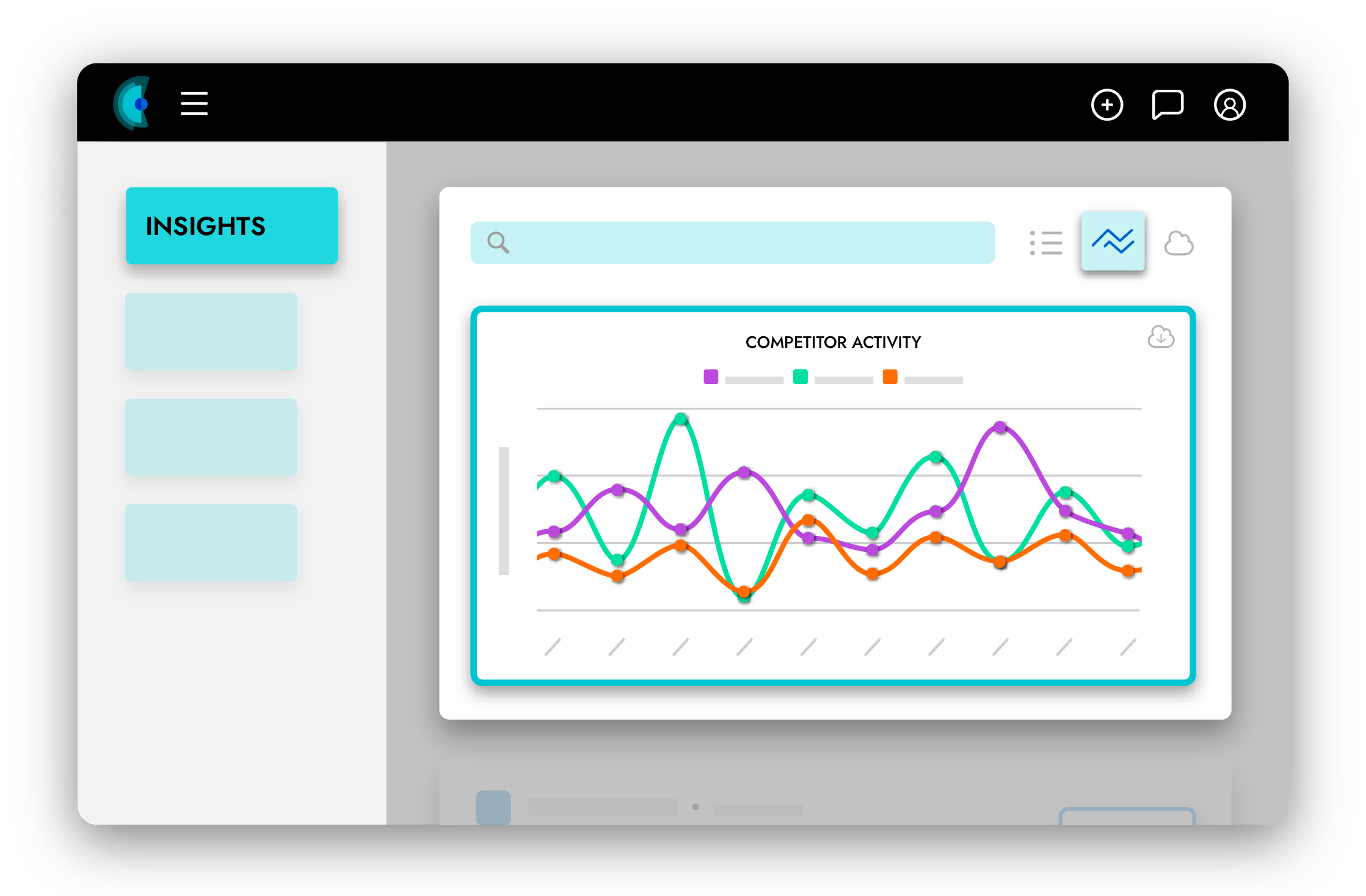
Crayon has collaboration features. This helps teams work together to manage and monitor competitive insights. Crayon also lets you create sales battlecards. You can also make customizable reports and dashboards.
Competitor analysis tools for SEO
6. SEMRush
SEMRush is a popular SEO tool. It stands out from others because of its competitor analysis features. With SEMRush, you can see your competitor's backlinks. You can also track changes in their ranking.
Here’s a sample dashboard after running a domain analysis for FreeCodeCamp:
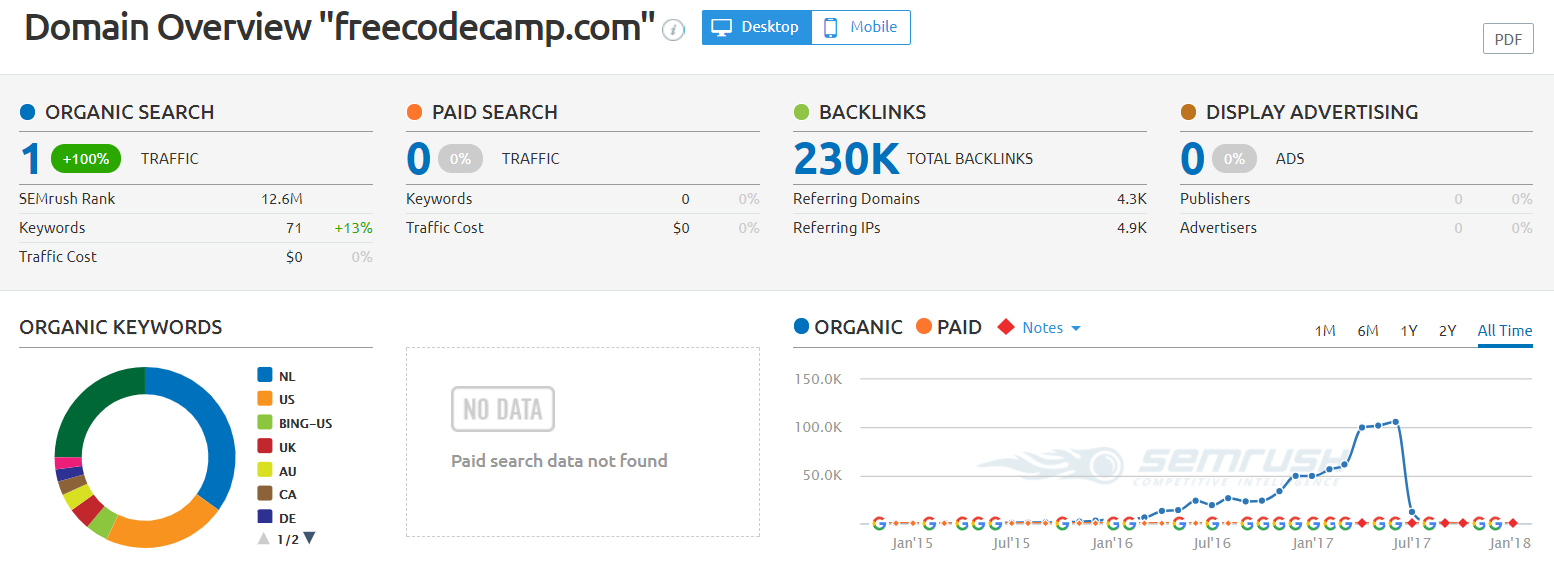
Here’s the analysis piece. It provides a by-the-numbers view of who’s competing for their keywords.

This tool helps you understand your competition in terms of SEO. It also shows which keywords your competitors are targeting. This affects your content strategy.
7. Ahrefs
Ahrefs’ site explorer is a popular tool for SEO competitor analysis. It lets you check the top organic keywords for any URL. You also get a rough estimate of the competitor's traffic on those keywords.
You can easily find a site's most popular content by looking at its backlinks. This information shows which products or messages are most effective for a brand.
You also assess what keywords bring in the most traffic to a competing site. You focus on the highest-performing content.
The takeaway here? You don't have to guess your competition's traffic when you regularly run your own reports.
8. MozBar
MozBar is a browser extension that shows how authoritative a site is to Google. MozBar uses Moz's own metric called domain authority (DA) to assign sites a DA score. This score is based on the site's likelihood to rank in search engines. It considers factors like backlinks. The higher the DA score, the better.
The MozBar, settled atop your browser, is a useful tool. It quickly determines a site’s search potential performance at a glance.
When you enable it, you can also see how other sites compare to yours in a Google search.
You can use MozBar to do passive competitive analysis. This helps you look at competing sites. You can see how long they've been around and if they're winning backlinks.
Competitor analysis tools for content
9. Buzzsumo
Buzzsumo helps you find the top content for topics related to your brand and competitors. The tool evaluates how well a piece of content does on social media and how often it's shared online.
This helps you see who is doing well in the industry and find popular topics for yourself.
You can use Buzzsumo to find influential people in your industry. It also helps you get new ideas for blog posts.
10. Similarweb
Similarweb is a very useful tool for analyzing both content and SEO. This tool helps you examine your competitor's content. It also shows where their traffic comes from.
You can find out where a site's visitors come from and where the site sends them.
More importantly, for content marketers, you see what topics visitors search for. You also see what other relevant sites they visit.
11. Feedly
Use Feedly to monitor a competitor's content without constantly checking their blog.
Feedly is a content aggregator. It stores and organizes content as it’s published. This includes content from your competitors. This allows you to see hot topics covered by your competitors, all on one page.
Tools to analyze competitors' emails, ads, and industries.
12. Mailcharts
Email marketing is one of the most boring channels to analyze for competition.
Mailcharts collects emails from competing campaigns to help you. It looks at subject lines and send frequency. Then, it compares them to your own campaigns to see how your emails compare.
The tool also compares your email campaigns to their large library of marketing emails. This ensures you’re in tune with best practices, such as timing, frequency, and subject line length.
Mailcharts is a strong competitor analysis tool. Its website has many email examples to inspire you. You can see what the best emails look like by looking at some of the biggest campaigns.
13. Owletter
This tool collects emails from competitors and puts them in a dashboard. Owletter’s analytics notices changes in your competitors’ email frequency and trends. It helps you decide when to send your own emails.
This is a better way to spy on your competitors using data instead of a fake email account.
14. iSpionage
If you want to know about a competitor's paid ads, iSpionage is the perfect tool for you. It analyzes various aspects of PPC campaigns. For example, it might look at the number of keywords a brand is targeting on AdWords.
Additionally, you see what their target PPC keywords.
You can also see who else competes for PPC ads for a particular topic. Additionally, you can see how much their projected monthly budget is.
Brands considering PPC need this tool. It's essential for managing ad spend expectations.
15. Owler
This industry analysis tool uses community data to gather information and content. It's from startups relevant to your niche. It is another tool specifically for bigger brands. You input brands to create your own custom dashboard of industry names to watch.
And that wraps up our list!
How do you do a competitor analysis?
These tools can help you analyze your competitors. But remember to consider what happens after you run the numbers. Follow these steps to maximize your competitive intelligence strategy.
Analyze your actual competitors
Don't bother trying to compete with bigger rivals. A small coffee shop should not feel bad about having fewer followers than Starbucks or Dunkin' Donuts.
Context is important. Look at what the big players in your industry are doing. Start by assessing your competition. Focus on those who are similar in size and target audience.
Focus on metrics first
When you look at competitors, you may be tempted to focus too much on messaging.
But it's better to start with data analysis. Find as many metrics as possible. Then, try to understand the reasons behind their marketing.
How often do your competitors post new content? Do they post more promotional or non-promotional content? What are their top-performing keywords and hashtags?
Understanding someone's messaging is important. The answers to these questions could be just as important.
Turn analysis into action
Make sure the data you find leads to action.
You might find new keywords to target in your content from your research. Maybe your competitors are more active, so you should push your content harder.
In any case, the goal of competitive analysis is to enhance your own marketing strategy. The more information you glean from competitors, the better.
What competitor analysis tools do you use?
To fine-tune your marketing strategy, it is crucial to do competitive analysis. Use the right tools to run your analysis quickly. This way, you can spend more time focusing on your own efforts.
Want to start? Look at our guide to social media competitive analysis today.
Grow your Instagram with Stormlikes

Maddy Osman
AUTHOR & EDITOR-IN-CHIEFMaddy Osman is a writer who specializes in social media, marketing, and digital strategy. She is a graduate of Antioch College and earned her MBA at Boston College's Carroll Graduate School of Management, specializing in STEM Management. Her work has been published in numerous academic journals and mainstream publications. She lives in New England with her husband, two children, and three dogs.

